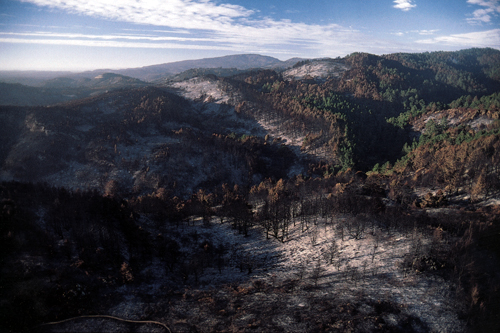On October 3, 1995, smoke from the remains of an illegal campfire was spotted at Point Reyes National State Park in northern California. Over the next week, just over 12,000 acres burned, most of it concentrated at Mt. Vision in Point Reyes National Seashore, and several dozen homes were razed. Some 70 percent of the plant life in the area ranging from northern coastal scrub and salt marsh to Bishop pines and Douglas firs was lost. By the time the fire was declared under control on October 16, over 2,000 firefighters had been involved in the effort to quash the flames.

Copyright Bruce Farnsworth/NPS
Mycorrhizal fungi such as Rhizopogon salebrosus play a key role in maintaining various ecosystems. R. salebrosus is usually among the fungi found in areas where pine trees and Douglas firs have re-established themselves after severe ecological disturbances such as the 1995 Mt. Vision fire. The symbiotic fungus is also the model organism used to study mycorrhizal-mediated carbon transfers between plants, and for studying interactions between plants and fungi that don’t involve photosynthesis.
Principal Investigators: Thomas Bruns, Univ. of California, Berkeley
Program: CSP 2009